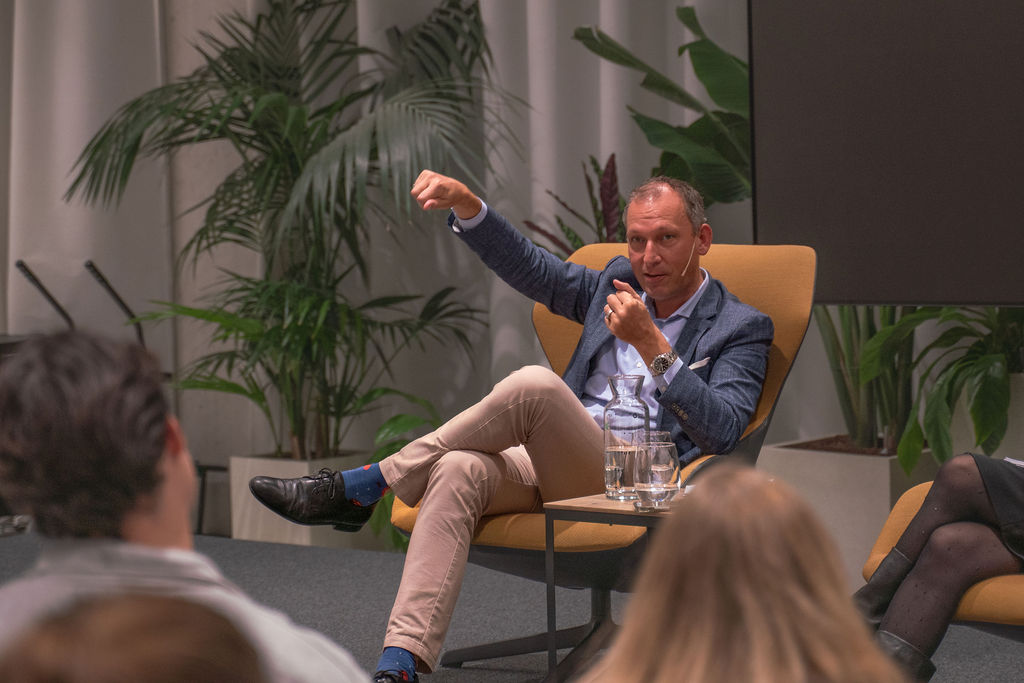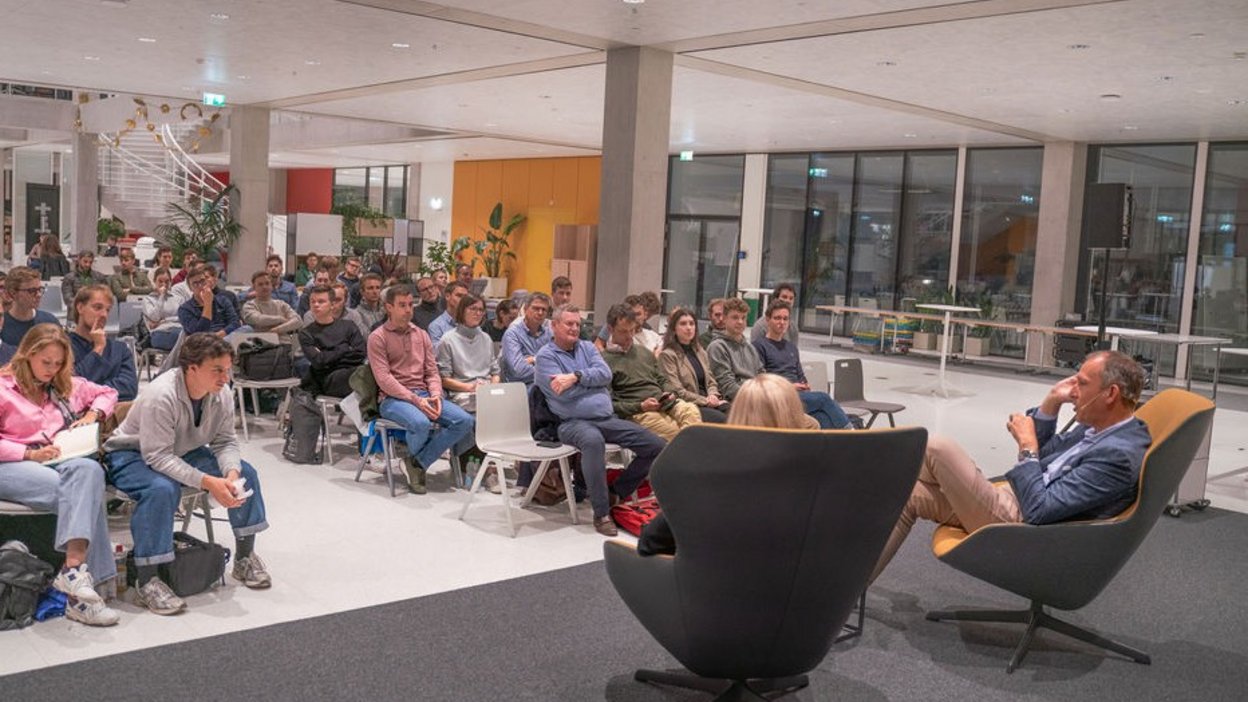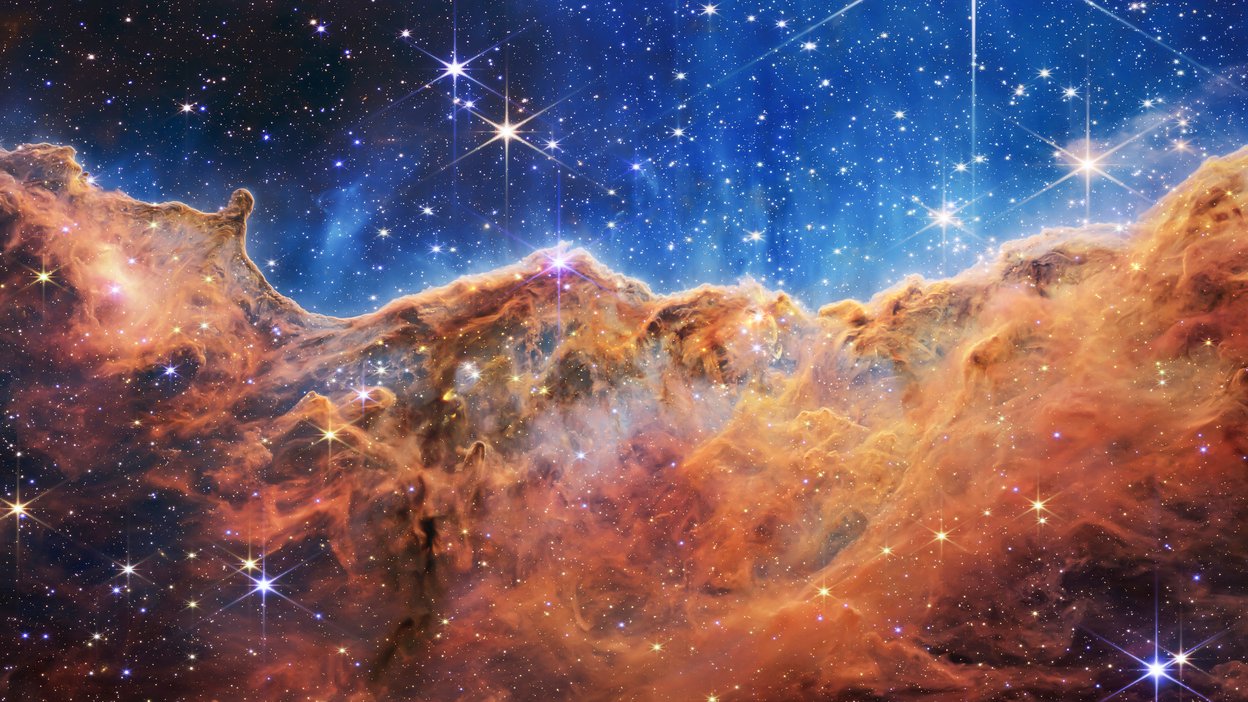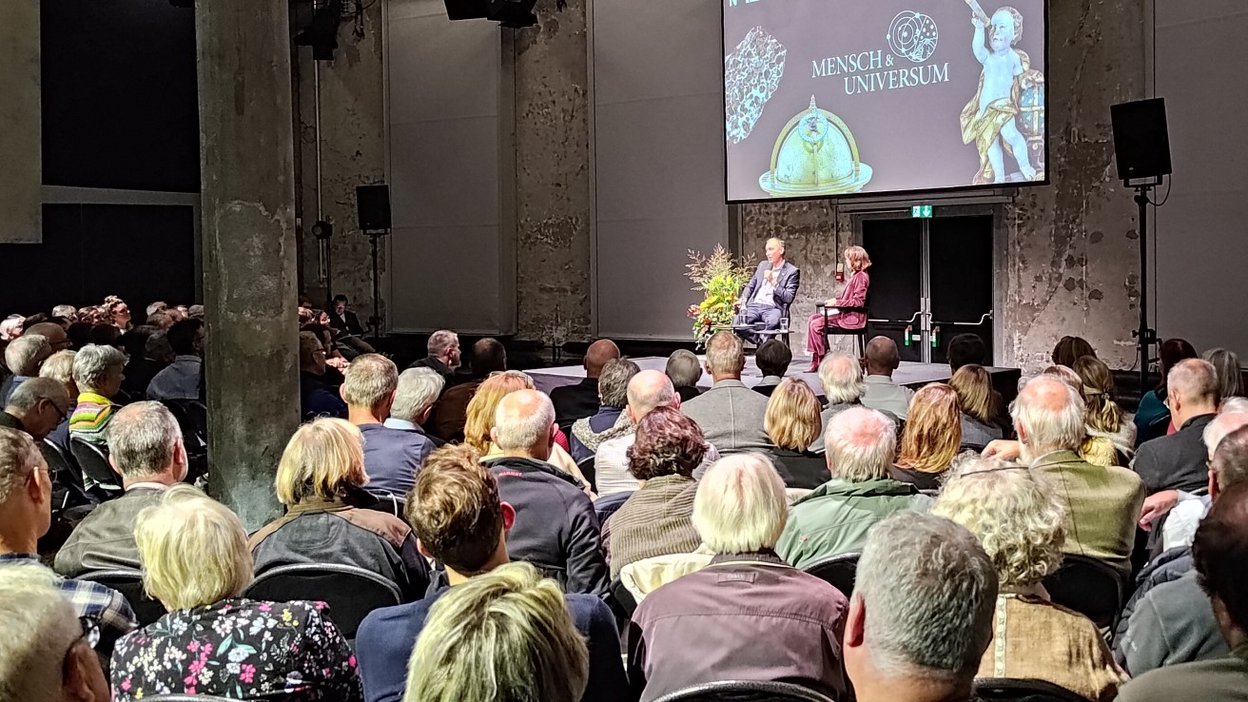Background - 27.10.2023 - 14:00
Personality in Residence Thomas Zurbuchen: "The universe is full of surprises"
Thomas Zurbuchen, director of the ETH Zurich Space Center and former research director of the U.S. space agency NASA, was "Personality in Residence" at HSG's SQUARE on October 24 and 25, 2023. For two days he inspired the audience and focused on three things: his handling of great challenges, the problem of space debris and the human fascination for outer space.

The director of the ETH Zurich Space Center and former research director of the U.S. space agency NASA was at HSG's SQUARE on October 24 and 25, 2023.
As a child in Heiligenschwendi, Thomas Zurbuchen looked up at the stars. The view of the night sky was puzzling and beautiful. At that time, there was no thought that he would one day be a formative figure in American space exploration. A man of curiosity and responsibility, hung the famous quote from the German Enlightenment philosopher Immanuel Kant on his wall: "Two things fill the mind with ever new and increasing admiration and awe, the more often and persistently thought is occupied with them: the starry sky above me and the moral law within me."
After studying physics and mathematics at the University of Bern, Thomas Zurbuchen became a professor of space science and space engineering at the University of Michigan, where he founded the Center for Entrepreneurship. From 2016 to 2022, he led the research program at the U.S. space agency NASA. At SQUARE and in the Lokremise in St.Gallen, he answered questions from students and the public. The internationally renowned science star was just "Thomas" to everyone.
The true story of success
Thomas Zurbuchen says there are "lake persons" and "river persons". He himself is a "river person". Always being "in the flow" plays an important role in his life. He never does the same job twice. New challenges served him symbolically as fuel. At the same time, he emphasized, "I've never been successful on my own." He draws great potential from diverse teams, and makes a point of bringing out the best idea in the room, regardless of who it comes from.
What brought Zurbuchen back to Switzerland? Creating "a small version of NASA" at ETH is not a goal for him, he says. Rather, he said, he wants to help young people who are interested in engineering, technology, mechanics or business find more career opportunities in the space industry and establish Switzerland as a growth market for startups in that industry. As he did back in the U.S., he now feels like an "immigrant" again in Switzerland.
He advised the students in the audience to always see their own origins as an opportunity to bring in new perspectives. An exchange year, be it in another country or in a culturally foreign environment, may be unpleasant at first, but is always worthwhile if you want to learn something new. The same applies to choosing a career: "Choose the job that opens the most doors for your future career," Zurbuchen emphasized.
The vastness of space
In other discussions, things got more technical. For example, when it came to so-called space junk. Thomas Zurbuchen spontaneously grabbed a pencil, drew the globe on a flipchart and explained: "Most satellites are in low-Earth orbit up to 500 km. These include weather, communications and military satellites or, for example, SpaceX's commercial Starlight satellites. When people talk about clogging the orbit, they mean this low orbit, but they also mean the geostationary orbit about 36,000 km above Earth." Retired satellites could either burn up in Earth's atmosphere or be sent more distantly into what is known as "graveyard orbit" about 300 km above geostationary orbit. But it becomes dangerous, he said, when pieces of space debris collide at relatively high speeds. This is what happened when China tested an anti-satellite rocket in 2007. This caused about 3500 fragments, which at that time accounted for 30% of the total space debris. Today, there would be a risk that such collisions would trigger chain reactions, preventing important satellite or rocket launches.
There are currently no regulations for dealing with space debris, only "standards of behaviour," Thomas Zurbuchen explained. NASA is not a regulatory agency, he said. Unlike, for example, the poisoning of international waters, the actors could not be held accountable before the International Court of Justice. Moreover, he said, there is a lack of talks, especially between West and East. While data from weather satellites is shared between countries, the international community does not talk together about cleaning up space debris, he said. That worries him the most. The astrophysicist is convinced that the problem can be solved technically.
Why we reach for the stars
In a discussion with Barbara Bleisch, SRF presenter of the program "Sternstunde Philosophie," Thomas Zurbuchen finally turned to the fundamental question: Why are we fascinated by the vastness of space?
To visualize the dimensions of the universe, Zurbuchen thinks in terms of time: "The light of the sun takes about 8.5 minutes to reach the earth, the light of Jupiter 1 hour, the light of the nearest stars 4 years." The diameter of our galaxy, the Milky Way, corresponds to about 100,0000 light years. The light from the oldest galaxy takes over 13 billion years to reach Earth before we see it. Our look at the stars is therefore always also a look into the past.
Changes are the rule in the universe, explained Thomas Zurbuchen. For him, space research therefore has a lot to do with the hope for a better future. "We find solutions that we will need tomorrow to solve problems that we don't even know about today." That would also benefit the challenges on Earth, such as technical solutions to improve the climate. Zurbuchen, however, with friendly regards to Elon Musk, does not see Mars as a "new Earth" to which humanity could emigrate if necessary. For him, Mars is a place for research purposes.
But Thomas Zurbuchen, the rationalist and knowledge manager, also spoke about feelings. He said he had tears in his eyes when NASA colleagues showed him the first images sent to Earth by the James Webb telescope. They showed the Carina Nebula. This one, he said, looked like "an ocean with yellow and brown and stars on top." It was one of the most beautiful regions of space he had ever seen. When he collected himself and looked at his colleagues, they too had tears in their eyes. This fascination remains unbroken for him. Because unlike the universe itself, it seems to be infinite.
Images: Elia Heinzer / Adobe Stock (gizemg) / Cornel Dora


